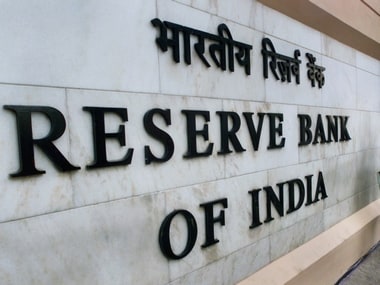The Reserve Bank of India today raised its key policy rate, for the second time in as many months, in a bid to tame inflation that has been high and sticky for several months.
“It’s important to curb inflation and inflationary expectations. This will help create an environment of growth,” RBI chief Raghuram Rajan said.
The hike was in line with what most analysts and experts had predicted and the markets reacted positively to it.
Here are the highlights from the second quarter monetary policy review:
[caption id=“attachment_1159841” align=“alignright” width=“380”]  Reuters[/caption]
• Reduced the marginal standing facility (MSF) rate by 25 basis points from 9.0 percent to 8.75 percent.
Marginal standing facility is a daily window through which banks access funds in urgency but at a higher rate than the repo rate.This facility has been of use to banks since the RBI had narrowed the repo window to 0.5 percent of NDTL in its fight to save the rupee. NDTL is net demand and time liabilities of banks. In other words, bank deposits.
As part of its rupee defence, the RBI had earlier increased this differential to 200 bps by hiking the MSF rate
A cut in this rate should help businesses as their short-term borrowing cost will come down. This will serve to balance the bearishness stemming from the repo rate hike. But definitely, industry will not be satisfied. As always, they would bay for largest peace of the cake. Banks would heave a sigh of relief as their cost of funds will come down, though marginally.
• Increased the policy repo rate under the liquidity adjustment facility (LAF) by 25 basis points from 7.5 percent to 7.75 percent.
Repo rate has been increased to break the spiral of rising price pressures. This will curb the erosion of financial saving and strengthen the foundations of growth.
• Cash reserve ratio (CRR) was kept unchanged at 4.0 percent of net demand and time liability (NDTL); and
the liquidity provided through term repos of 7-day and 14-day tenor was increased from 0.25 percent of NDTL of the banking system to 0.5 percent.
Forecast:
• Strengthening export growth, signs of revival in some services and a likely pick-up in agriculture to help GDP grow 5 percent this fiscal.
• Economic activity to see buoyancy towards the close of the financial year due to revival of large stalled projects and the pipeline cleared by the Cabinet Committee on Investment.
• Both WPI and CPI inflation to remain higher than current levels, warranting “appropriate policy response”.
• Retail inflation likely to remain around or even above 9 percent without policy action
Policy stance:
• Liquidity has been loosened through export credit refinance and 7-day and 14-day term repos. We have also given greater flexibility in managing reserve requirements.
• Normalcy has not yet returned to forex market as oil companies’ dollar demand still not reflected there.
• Unwinding the recent exceptional liquidity tightening steps as steps to contain the current account deficit started taking effect in an improving external environment and as volatility in the foreign exchange market has ebbed.
• Important to break the spiral of rising price pressures in order to curb the erosion of financial saving
• Process of realigning interest rate corridor to normal monetary policy operation now complete
• Will closely monitor inflation risks while being mindful of the evolving growth dynamics
Measures for banks, non-bank financial companies
• Foreign banks setting up wholly-owned subsidiaries will be given near-national treatment, to issue scheme by mid-Nov
• Initial minimum paid-up voting equity capital or net worth for wholly owned foreign bank’s subsidiary will be $5 billion
• More durable way for banks to mitigate mismatch in demand and supply of cash is to step up efforts to mobilise deposits
• Draft report on Basel III capital framework likely by end-November
• Draft of proposed framework for domestic systemically important banks by end-November
• To issue updated guidelines on stress testing for banks by end-November
• To give banks option to pay interest on savings deposits and term deposits at intervals shorter than quarterly intervals
• First meeting of High Level Advisory Committee on new bank licences on November 1
• To issue guidelines on restructuring for non-bank finance companies (NBFCs) by end-November
Measures for markets
• To issue 10-year retail inflation-indexed securities in November/December
• To launch 10-year interest rate futures contracts by end-December
• Allows partial credit enhancement for corporate bonds by banks via credit, liquidity facilities
• To issue final guidelines on unhedged foreign currency exposures by end-December
• To revise timings for conducting MSF operations from November 5 between 1330 GMT and 1400
With inputs from Reuters


)
)
)
)
)
)
)
)
)



